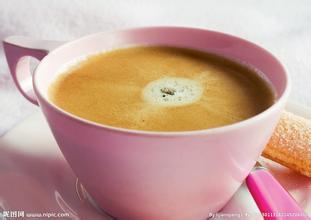When making coffee by dripping filter, you need to fold the filter paper into-how to fold the hand coffee filter paper.
When making coffee by dripping filter, you need to fold the filter paper into-how to fold the hand coffee filter paper.
1. The next part of the filter paper is folded along the gap and then put into the filter.
2. Put the ground coffee powder into the filter paper and tap it a few times to make its surface flat.
3. Pour boiled water into it, gently inject boiled water (the water temperature is about 95 degrees) from the central point, and slowly spiral the boiling water into all coffee powder.
4. In order to extract the delicious coffee ingredients, steam the expanded coffee powder (stay for about 20 seconds).
5. Inject boiling water for the second time and slowly inject it from the surface of the coffee powder. The amount of water injected must be coordinated with the amount of coffee that needs to be extracted, neither less nor too much.
6. the extraction solution can be stopped as soon as it reaches the number of people, and the remaining boiled water in the filter paper can be discarded.
Filtration: in the process of using different filter paper, I found that the filtration of different brands of filter paper is different, resulting in differences in coffee soaking time, in order to maintain consistency in the process of making coffee, you should try your best to maintain the standardization of coffee soaking time, so it is important to understand the filterability of filter paper.
Compared with the white filter paper, the log color filter paper has less bleaching process, but the flavor of the filter paper itself has increased, so you need to fully soak the filter paper with boiling water when brewing coffee, some of which are wet at least 2 times or 3 times. to reduce the smell of the paper into the coffee.
Bleaching filter paper, imported bleaching filter paper, has strict requirements in material selection, process and quality control, mainly the enzymes used in bleaching. This enzyme bleaching is a bioactive enzyme, which is widely used in the field of medicine. The degree of harm is negligible. Wetting filter paper can increase the fit with the filter cup, and it can also save the step of wetting filter paper and directly flush it with powder.

Important Notice :
前街咖啡 FrontStreet Coffee has moved to new addredd:
FrontStreet Coffee Address: 315,Donghua East Road,GuangZhou
Tel:020 38364473
- Prev

Latte cappuccino cup capacity cup-the difference between latte and cappuccino
Latte cappuccino cup capacity cup-the difference between latte and cappuccino many coffee fans like to collect all kinds of coffee cups, so some powerful coffee brands continue to offer specially designed cups for fans to collect. For example, illy will work with different designers to launch specially designed cups every year. Hong Kong star Chen Hao is a fan of illy coffee cups when traveling.
- Next

Why is the coarse ground coffee powder suitable for trickling filter-the common grinding thickness diagram of coffee powder
Why coarse ground coffee powder is suitable for drip filter coffee powder common grinding thickness figure 1, suitable for fineness grinding: Turkish copper pot, mocha pot, espresso machine. 2. Suitable for medium grinding: filter paper dripping filter, flannel dripping, plug air kettle (also known as siphon kettle). 3. Suitable for roughness grinding: dripping coffee machine, dripping filter pot. TIPS: by the way, the Turkish bronze pot is shaped like
Related
- Beginners will see the "Coffee pull flower" guide!
- What is the difference between ice blog purified milk and ordinary milk coffee?
- Why is the Philippines the largest producer of crops in Liberia?
- For coffee extraction, should the fine powder be retained?
- How does extracted espresso fill pressed powder? How much strength does it take to press the powder?
- How to make jasmine cold extract coffee? Is the jasmine + latte good?
- Will this little toy really make the coffee taste better? How does Lily Drip affect coffee extraction?
- Will the action of slapping the filter cup also affect coffee extraction?
- What's the difference between powder-to-water ratio and powder-to-liquid ratio?
- What is the Ethiopian local species? What does it have to do with Heirloom native species?

